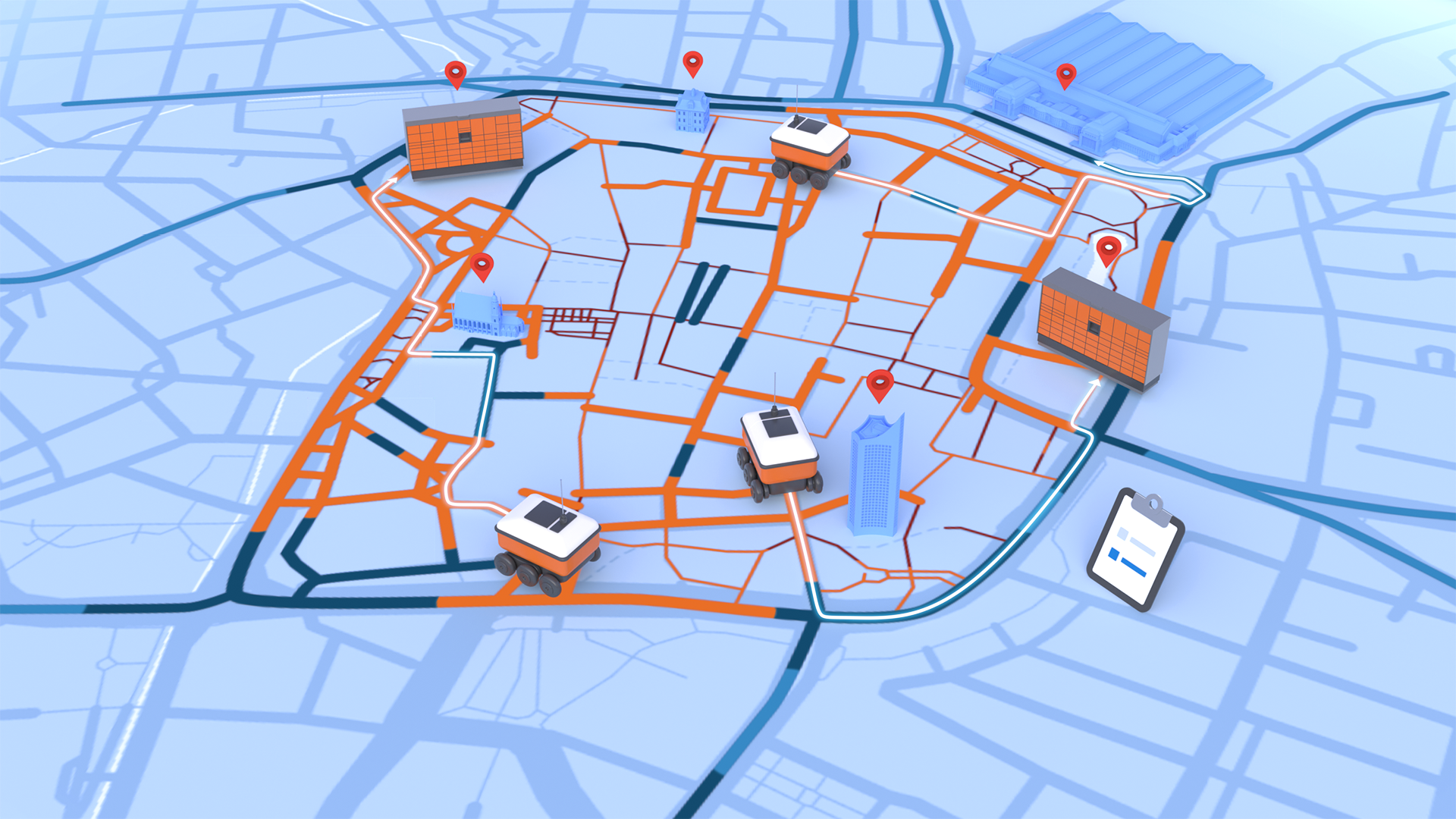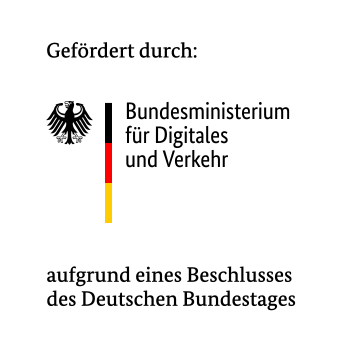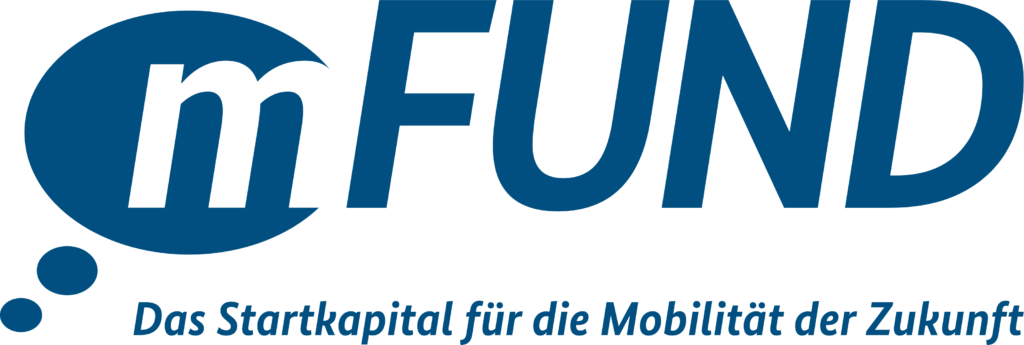
Autonomous Transport Vehicles in Micro-Logistics
MoVMi (Modeling of Urban Traffic Volume as Data Basis for Micro/City-Logistics and Autonomous Transportation)
What role will autonomous transport vehicles play in city logistics? The increasing challenges in parcel delivery, accompanied by rising personnel and energy costs, demand innovative solutions. Autonomous delivery and transport vehicles are considered a promising answer. Although research is already underway on specific solutions, the question remains open as to how many vehicles with what specifications are needed to meet the demand for delivery services in real traffic environments. Similarly unclear is the effective placement of micro-hubs (depots) as delivery bases.
Transparency for Efficient Micro-Logistics
This project has the clear goal of creating a transparent data set to assess the effectiveness of micro-logistics in urban areas. Existing data, survey results, and synthetically generated data are fused through simulation. The logistics simulation utilizes these as input parameters.
Surveys and Simulations for Autonomous Transport Management
To capture logistics demand, a survey is conducted. In parallel, we create a motion model for autonomous transport vehicles through simulations. This model considers transport speed depending on various operational parameters. Based on this, we develop a logistics simulation to estimate the required number and type of transport systems.
Logistics Demand Maps and Autonomous Transport Models
Fundamentally, we aim to create a map of logistics demand in the city center of Leipzig, as well as a data model of autonomous transport systems for speed calculation. Furthermore, a map will be created indicating where autonomous transport vehicles in micro-logistics can be effectively deployed with what parameters. Our findings should not only be applicable locally but also transferable to other areas, thus enabling broader analysis.
Sedenius Focus Areas
Project Management and Literature Review, Risk Management
In this work package, we adopt a comprehensive approach to assess the potential of autonomous delivery systems for urban areas like Leipzig. We conduct detailed market and literature research, take on project leadership and coordination, as well as risk management. Scientific-technical organization, documentation, and project control are our core tasks. Identifying dependencies and synergies between work packages lays the foundation for regular exchanges, optimizing our project implementation.
Simulative Test Environment for automated guided vehicle (AGV) Interaction and Dynamic Environment
Our simulation expertise comes to full fruition in the second work package. We create a test environment where the interaction between driverless transport vehicles (AGV) and their dynamic environment is simulated. This includes, among other things, parametrization movement patterns of traffic participants influencing AGV navigation. From this, a model for average transport speed in dynamic environments is derived. We use this model, in conjunction with the map to conduct simulative investigations and estimations of AGV demand. We analyze various aspects such as Micro Hub locations, route planning approaches, and the number and types of AGV . The results are presented visually as overlays on Open Street Maps (OSM).
Simulation Model for Optimized Parcel Delivery
The result of the fourth work package is a comprehensive simulation model. This enables the analysis of various parcel delivery scenarios and identifies bottlenecks in delivery considering the placement of micro-hubs. We visualize the (maximum) flow of parcel streams in different scenarios, including the placement of micro-hubs and extrapolation of future demand.
Fact Sheet
| Association coordinator | Sedenius Engineering GmbH Bitterfelder Str. 7-9, 04129 Leipzig FKZ: 19F1148 |
| Volume (at the time of approval) | 130.061,72 €, 70 % funding by BMDV |
| Term (at the time of approval) | 05/2023- 10/2024 |
| Project partner | Deutsches Zentrum für Luft- und Raumfahrt e.V. (DLR), Berlin Westsächsischen Hochschule Zwickau, Zwickau |

